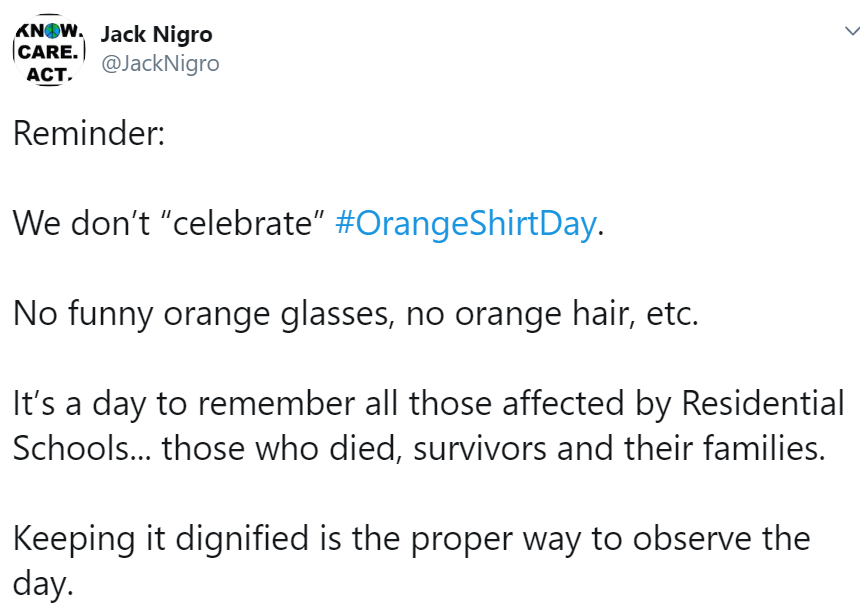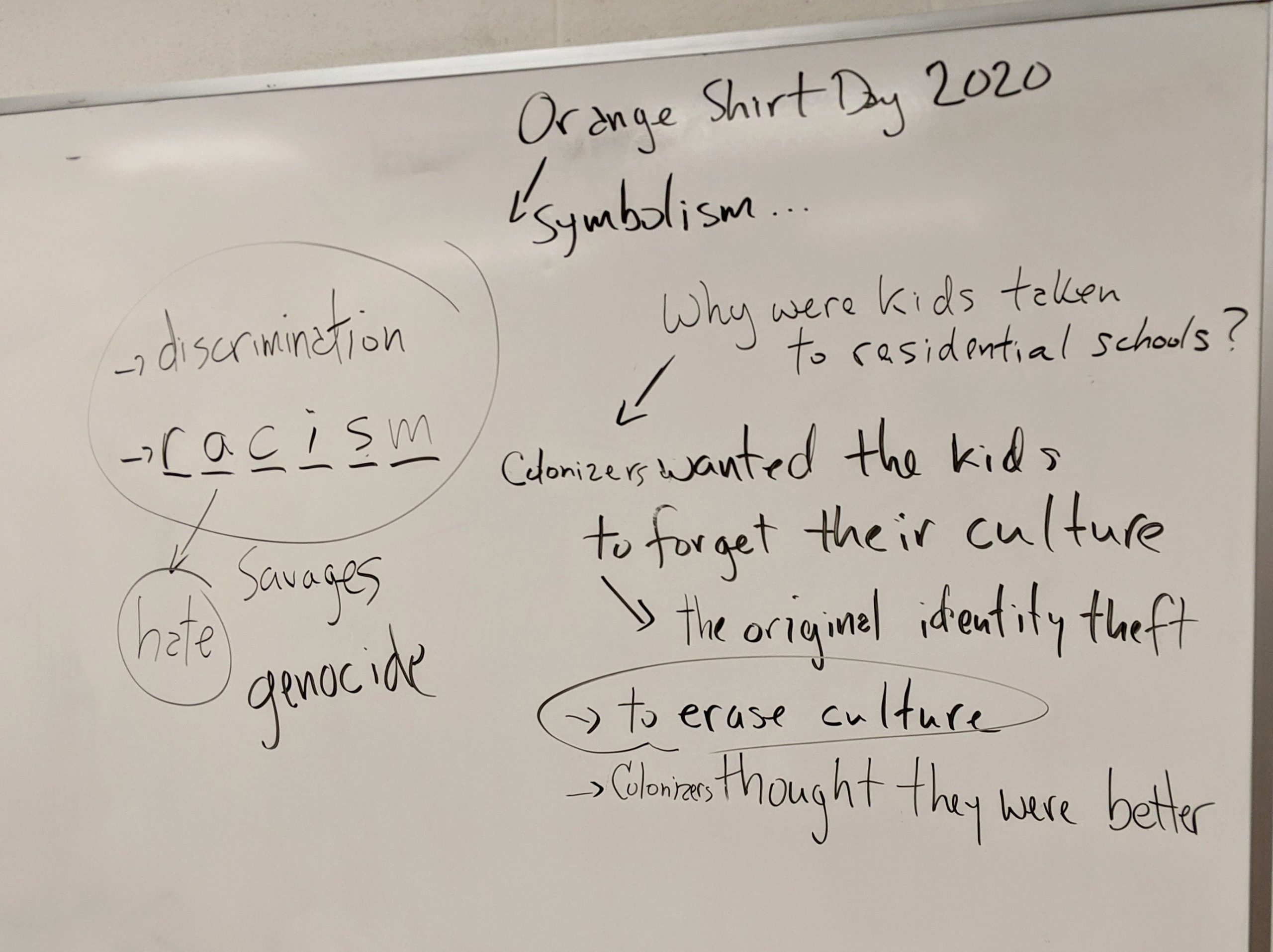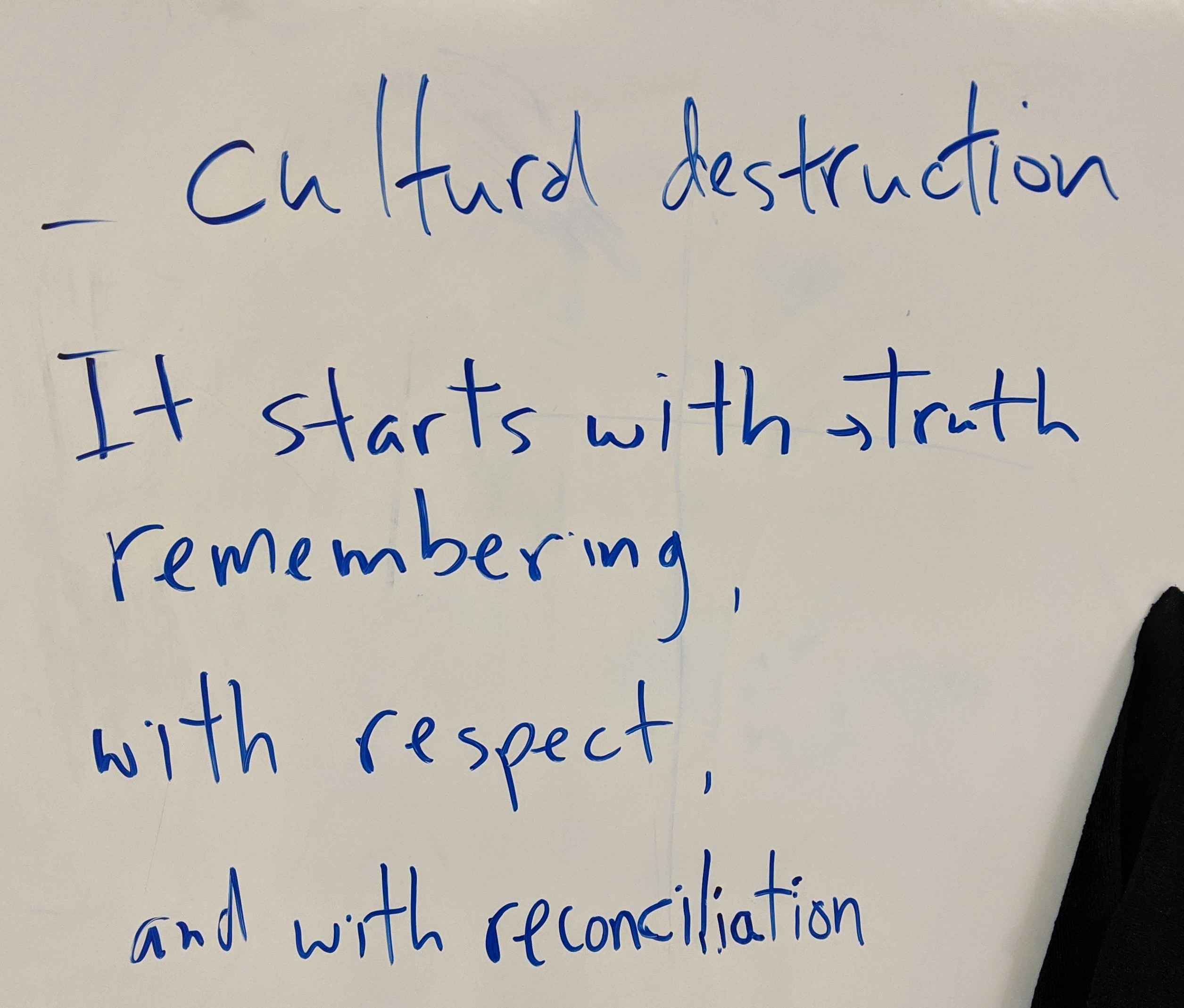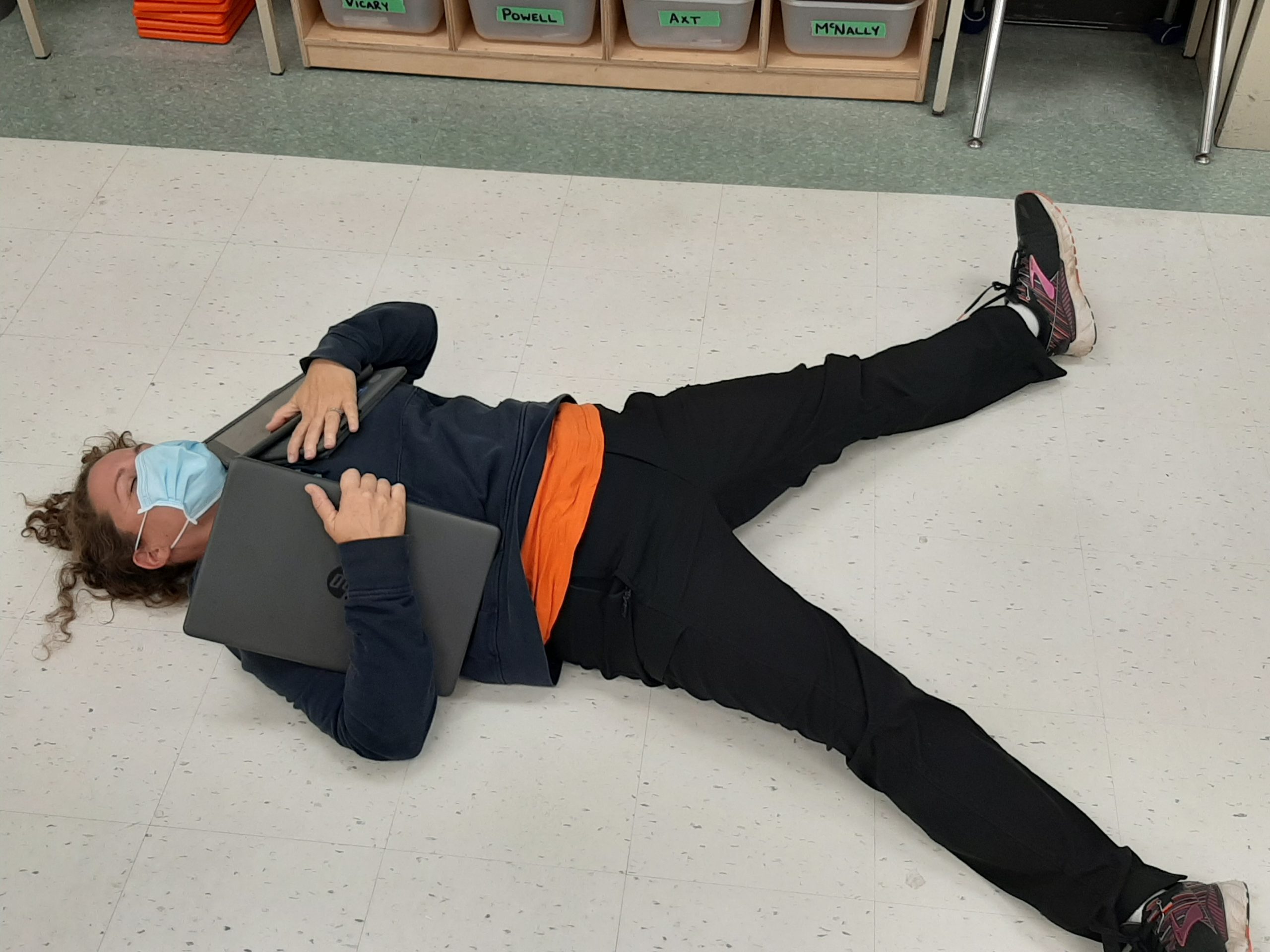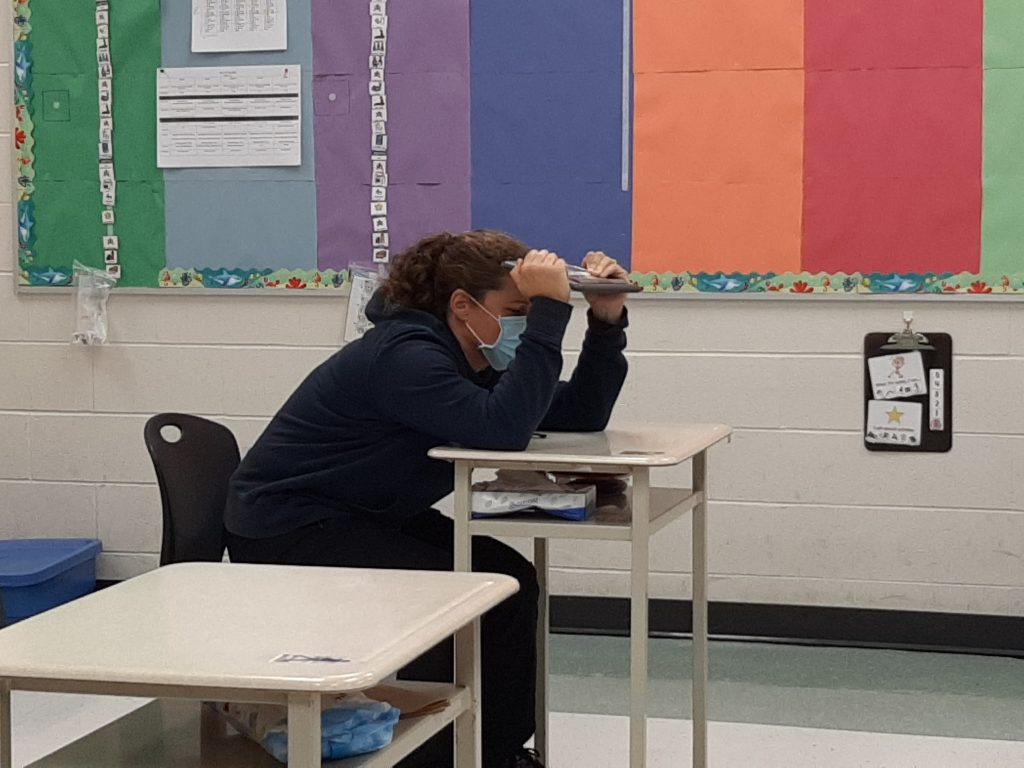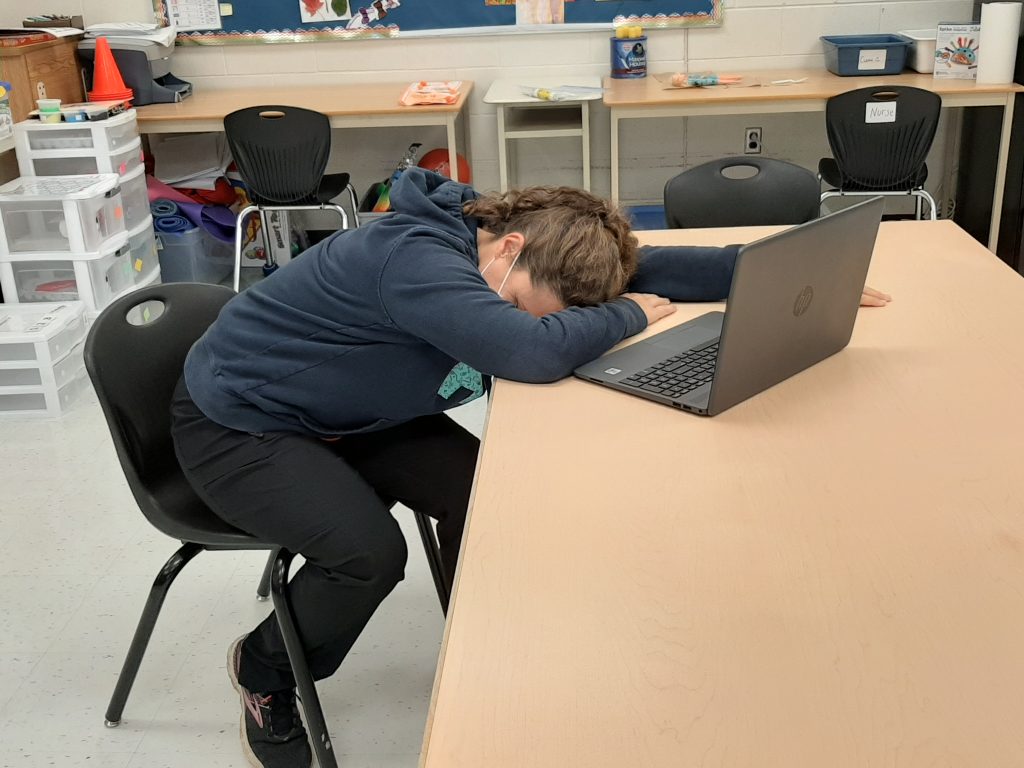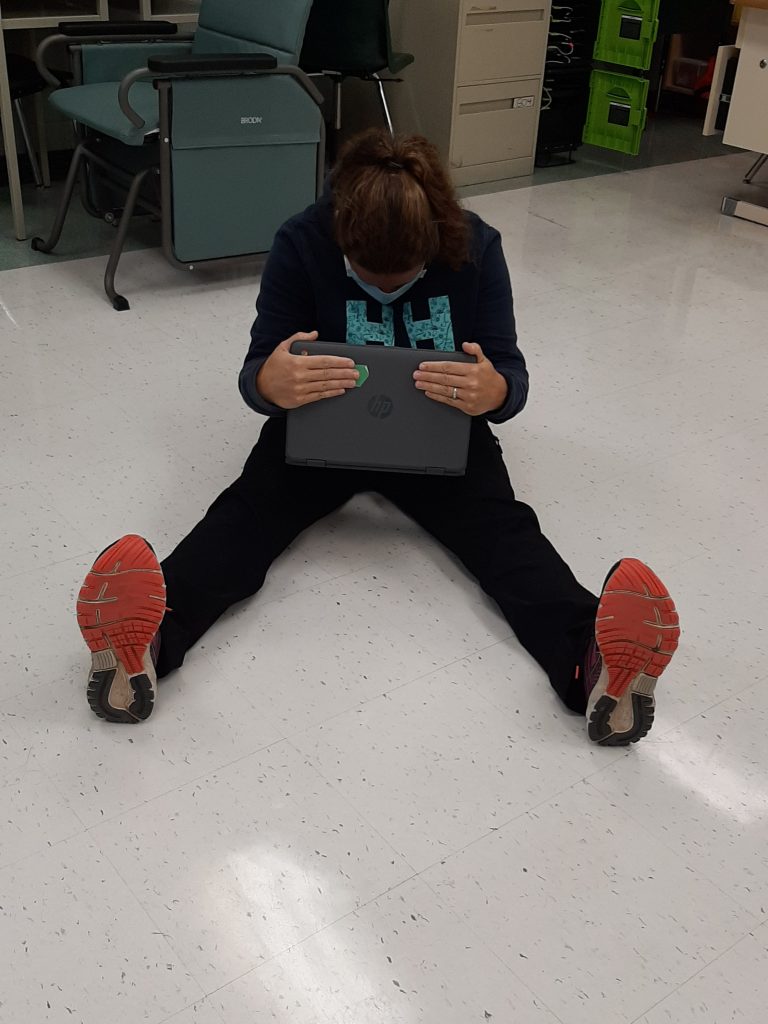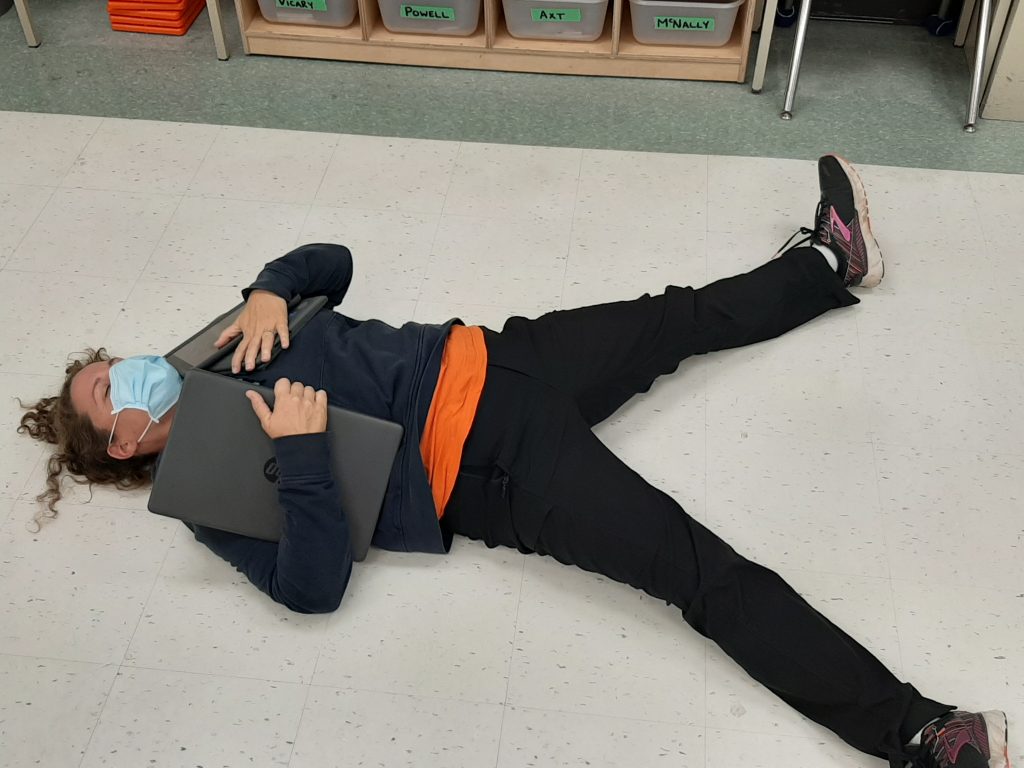- …like a weird batch of emotions being mixed up in my head everyday.
I use the word “weird” here as an amalgam of thoughts in order to come to grips with a whole whack of feelings. For now, let’s discuss 4 of the unique states of mind which I have been experiencing. They can be captured by the acronym C.A.G.E – confusion, anger, grief, elation.
Confusion
When we said our goodbyes in late June, we went home not knowing what was to come. How could we, no one did? It was a true test of the resilience of our profession as we transitioned from our physical spaces and into the virtual ones. It was emergency distance learning 101 for us all. Nobody knew how long it would go on, or how the students would respond. I recall the incredible stress of having to convert an old table and chair into a workstation at my house, the physiotherapy that came afterwards from my less than ergonomic set-up, and the (a)synchronous instructional awkwardness.
SO, after completing the balance of the academic year online and 3+ weeks of virtual summer school, I was really ready to be back in a classroom. In fact, I was elated at the possibility because things were proceeding as normally as they could as numbers declined and even though everything was up in the air when it came to education.
At least, our tentative assignments and schedules had been shared, there was more than an air of uncertainty that things were bound to change. Daily news reports, and social media posts had us all still holding our breath. What was school going to look like after “emergency distance learning”? What was the government’s plan? What were are school boards doing to be prepared for September?
Anger
There was no shortage of sound bites and stories to fill in the gaps, and for a fleeting moment in late July, it almost looked like the numbers were dropping enough as if the winds of possibility filled the air. Things began looking positive, yet it was still relatively quiet when it came to direction from our current government when it came to education except that they had experts working on it. Come mid-August, my bubble of hope burst with news of increasing numbers of cases. Any residual confusion had given way to anger and disappointment in this educator.
When school board emails began coming again in mid-August, the uncertainty around COVID 19 in our schools left us scratching our heads, as we did back in March. Little did we know what was about to drop on us all when school boards began surveying families about their choices for virtual or in class learning? But, that’s a topic for another post.
It was pretty easy to get angry although it didn’t help. Yelling at the TV, like Grampa Simpson, everytime a new daily increase of cases was announced or at how someone somewhere decided that a large social gathering was a good idea without taking precautions. Seeing newsers with the Minister of Education spinning government yarns about funding increases, which they had stripped, and safety of the students raised my ire too. No wonder I spent so many hours muttering to myself while cleaning the garage in August. “Good grief!”
Grief
I’d like this to be at the Charlie Brown level when he says, “Good Grief,” but it isn’t. One of the single most powerful emotions I have been battling with since March has been grieving the way that education is now divided into B.C. (before COVID-19) and C.E. (COVID-19 Era). I am sad for my students who missed out on perennial rights of passage such as grads, sports, extra-curriculars, and trips. I feel grief for the students who had to stay at home without contact with their friends other than through blue screens. I feel for the adults who struggled to support their children’s learning while juggling their own work. Acknowledging this feeling is my way of trying to move forward in a healthy way. I know there are many teachers who are feeling something similar.
Elation
After great reflection, I chose the classroom option to start this school year. Admittedly, this is a selfish choice, as I thrive in the classroom. My wife mentioned on several occasions that I needed to be back at school too. Although, I am not sure if that was for her sake or mine? Regardless of who benefited most by my return to the classroom, the fact is I was elated to be back, but it also came with a cost.
I now go for weekly COVID 19 Tests now that my bubble has expanded. With a 96 year old and a spouse with asthma in our home, we are proceeding with great caution. I am wearing a mask and frequently sanitizing my home, trips anywhere are only out of necessity, we are co-ordinating our schedules to reduce interactions so my father in-law does not become at greater risk, and any semblance of a social life or gatherings with extended family outside our residence bubble are now only on the camera roll of my smartphone. Yet, I think it is worth it.
A stronger feeling of unity amongst colleagues is happening. This turmoil has given rise to a new sense of telepresent professionalism(virtual staff/team meetings). Conversations are fewer, but more meaningful. Smiles are now made more expressive as they are shared behind our masks. All of these little things have made the return to school possible despite the heavy and shifting workload.
Prepping to teach this September has matched the level of confusion and effort of my very first years. It’s tough sledding right now and more changes are ahead as we have only been through a few weeks, but even though my return to the classroom this month has me staggering, I am encouraged and challenged, in a good way, to innovate and adapt.
My head is spinning most days as I grapple to sanitize, mask up, shield up, and emotionally ramp up to teach. Yet, I cannot help, but still find some happiness in all of this each day. And although you can’t see it through my mask, seeing students and staff in real life has become the biggest reason for the smile on my face each day at school despite the CAGE.
Stay strong. Thanks for reading.
Will
Note:
I had the bulk of this post ready to share our first week back, but could not do it. Something was telling me to bank my initial thoughts for a couple of weeks. Maybe I wanted to take some time for the dust to settle in order to make sense of it all. Sadly, it’s still pretty dusty around here, and based on the daily streams of educators sharing their ups and downs via social media, our collective ability to sift through the mess to make sense out of it, and let the dust settle has not occured. Yet.

